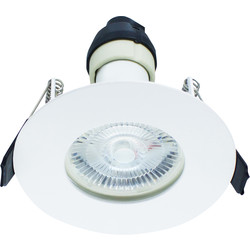- Jul 15, 2016
- 23,299
- 1
- 29,151
- 315,788
- If you're a qualified, trainee, or retired electrician - Which country is it that your work will be / is / was aimed at?
- United Kingdom
- What type of forum member are you?
- Electrical Engineer (Qualified)
Fire protection in listed buildings is of high priority and although the existing ceilings if original or even sympathetically replaced may offer limited protection there may well be retrofitted fire protection you cannot see above them. It is important to know if these light fittings are compromising the fire protection of this building.









